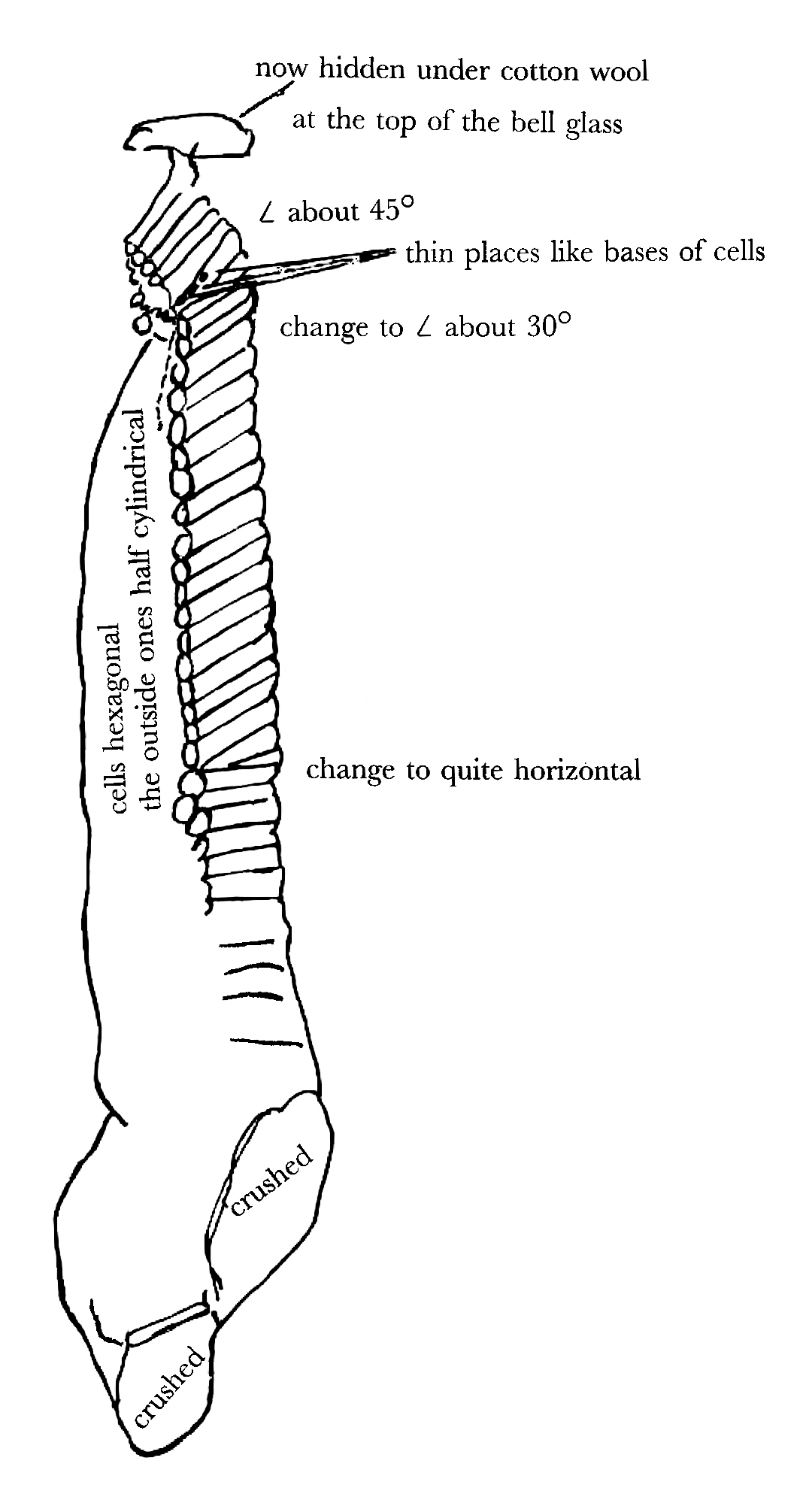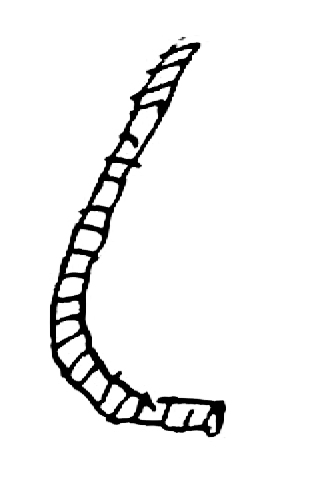From J. S. Henslow 7 April 1860
HRS.1
7 April 1860
My dear Darwin,
I send you all I can well manage—a mere sketch of what you might expect to find if you think the specimen sufficiently interesting to have it forwarded—2
 it is suspended from inside of a bell glass by liquid & cotton wool—I can easily detach it by Alcohol— The edges are somewhat crushed here & there, & altogether it is beyond my opportunities to examine it so thoroughly as to give you any very precise details— I find it came from Cuba not Mexico, as I told you. The material resembles that of the nests of V. vulgaris & V. holsatica—firm fibre—not the herbaceous materials which become so rotten in the nests of V. crabro & V. rufa—& look as if these were composed of rotten wood— Perhaps they may be in part—but certainly not entirely, for I have found the material, when freshly laid on, quite green in some cases—
it is suspended from inside of a bell glass by liquid & cotton wool—I can easily detach it by Alcohol— The edges are somewhat crushed here & there, & altogether it is beyond my opportunities to examine it so thoroughly as to give you any very precise details— I find it came from Cuba not Mexico, as I told you. The material resembles that of the nests of V. vulgaris & V. holsatica—firm fibre—not the herbaceous materials which become so rotten in the nests of V. crabro & V. rufa—& look as if these were composed of rotten wood— Perhaps they may be in part—but certainly not entirely, for I have found the material, when freshly laid on, quite green in some cases—
My Curate is away for a fortnight, & I have my hands full— but I did not like to defer this scanty account any longer— If you prefer propounding Questions, to seeing the specimen I will endeavour to answer them—but not feelin⟨g sure⟩ of what you exactly want I am at a loss—
Ever Yrs affec, | J S Henslow
CD annotations
CD note:3
 Ap. 23d. 18604 Mr Smith showed me a supposed paper wasp nest from Siam also vertical—with cells at top inclined downwards at about 45o & then horizontal; but oddly at lower end of several narrow strips of comb they bend inwards & become horizontal—so that cells at lower end are vertical.— Some of cells at outside are quite cylindrical.— Mr Smith showed me wasps nest with common worker & Queen cells with 4 rows of intermedial gradation—with side-walls elongated, which looks as if distance of building was increased.— Great rm difference in size of Queen & Worker cells.— Waterhouse remarked Queen cell normal form—and not lower half sphere, for this would suffice for all to work
Ap. 23d. 18604 Mr Smith showed me a supposed paper wasp nest from Siam also vertical—with cells at top inclined downwards at about 45o & then horizontal; but oddly at lower end of several narrow strips of comb they bend inwards & become horizontal—so that cells at lower end are vertical.— Some of cells at outside are quite cylindrical.— Mr Smith showed me wasps nest with common worker & Queen cells with 4 rows of intermedial gradation—with side-walls elongated, which looks as if distance of building was increased.— Great rm difference in size of Queen & Worker cells.— Waterhouse remarked Queen cell normal form—and not lower half sphere, for this would suffice for all to workFootnotes
Summary
Sketch and description of a [wasp’s] nest from Cuba. [Notes by CD on wasps’ nests and comb-building habits of hive-bees.]
Letter details
- Letter no.
- DCP-LETT-2750
- From
- John Stevens Henslow
- To
- Charles Robert Darwin
- Sent from
- Hitcham
- Source of text
- DAR 166.1:180
[diagram here]
- Physical description
- ALS 2pp ††, CD note
Please cite as
Darwin Correspondence Project, “Letter no. 2750,” accessed on 24 April 2024, https://www.darwinproject.ac.uk/letter/?docId=letters/DCP-LETT-2750.xml
Also published in The Correspondence of Charles Darwin, vol. 8


